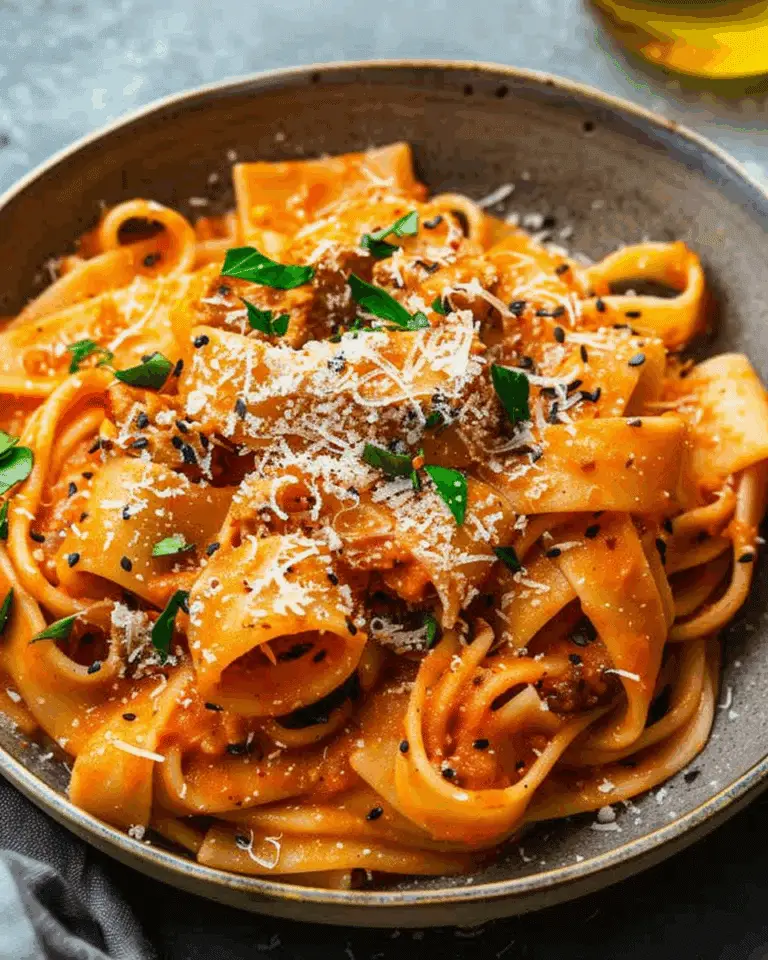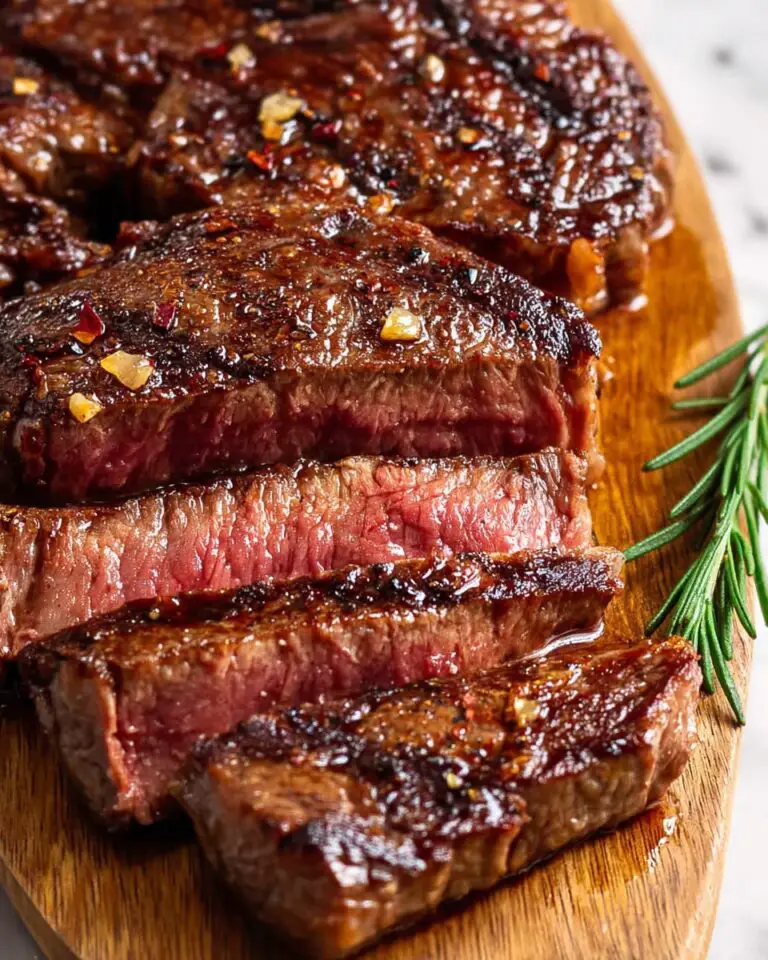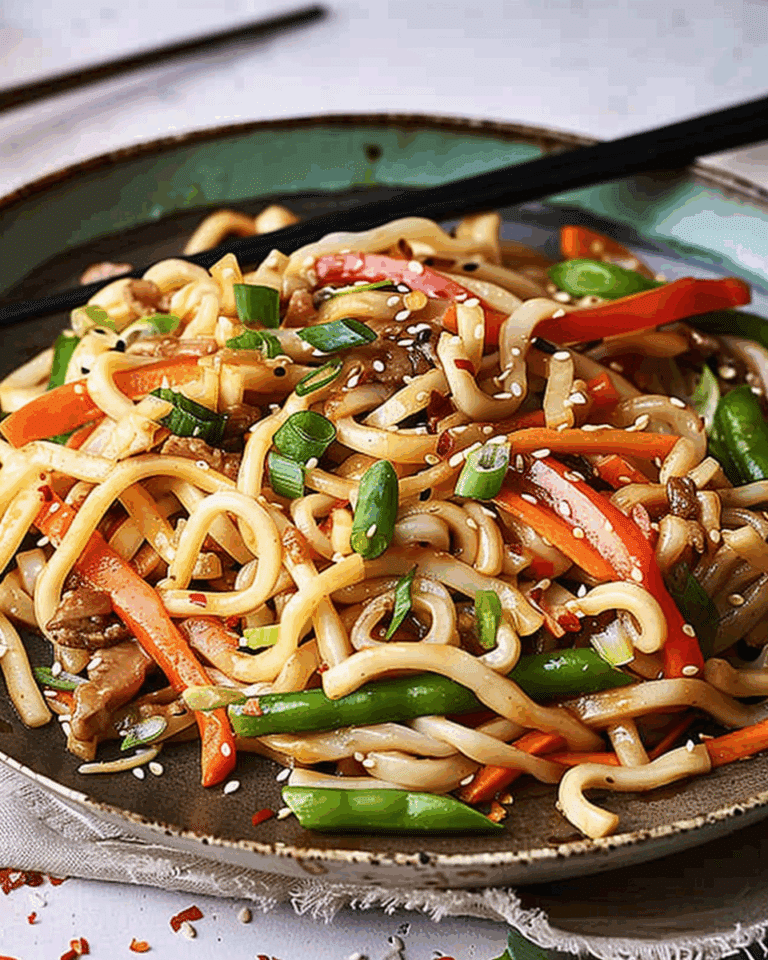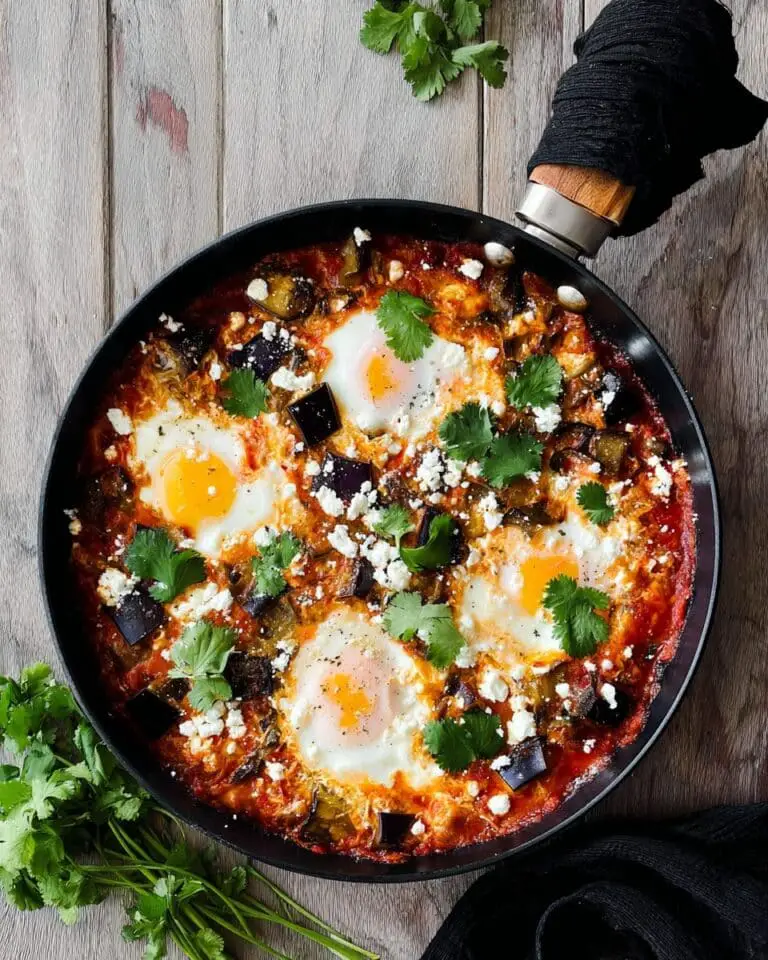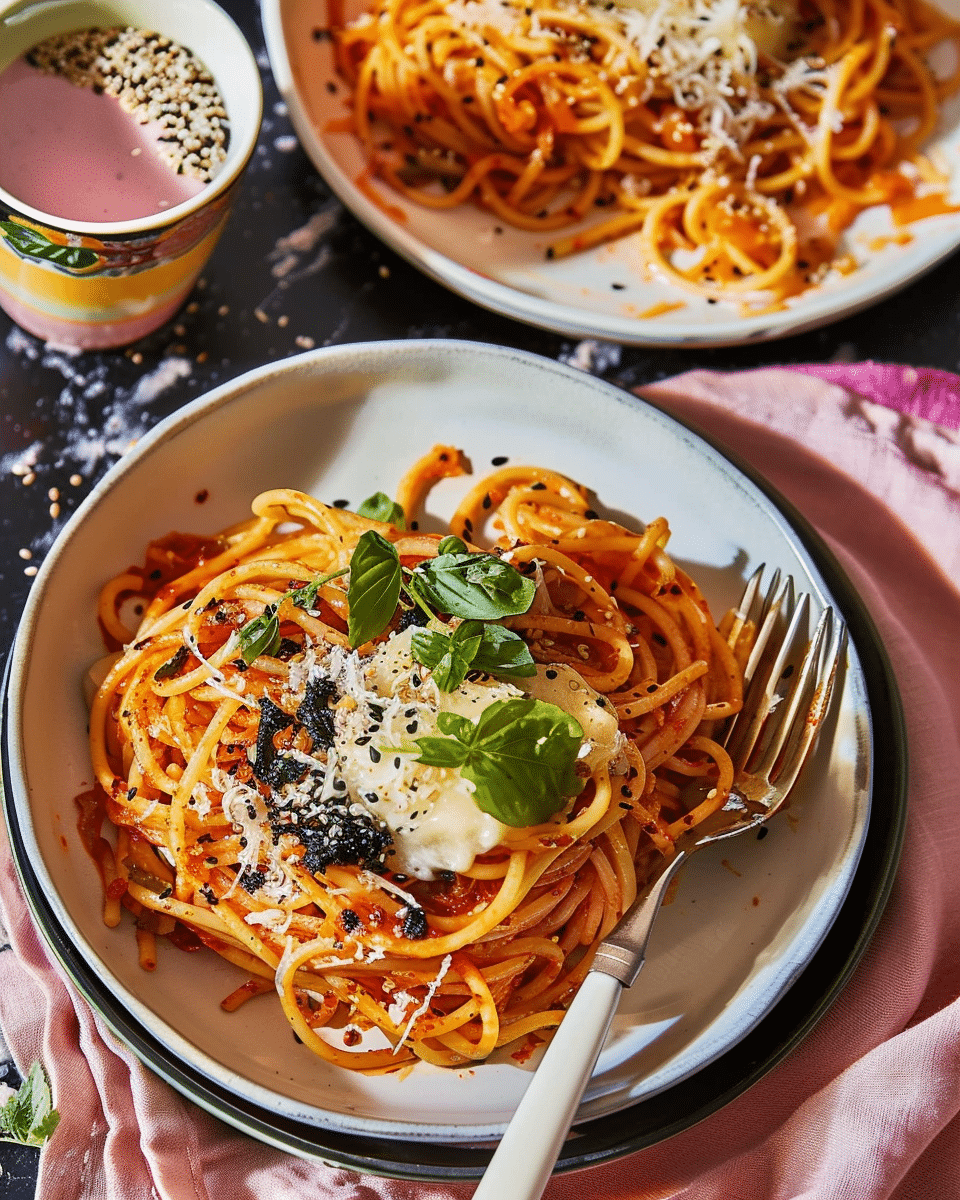
Why You’ll Love This Recipe
- A unique fusion of Korean and Italian flavors
- Creamy, cheesy, and spicy all in one dish
- Quick and easy ready in under 30 minutes
- Packed with umami from gochujang, kimchi, and seaweed
- Perfect for a cozy weeknight dinner or an impressive comfort meal
- Customizable with protein or veggie add-ins
Ingredients
(Tip: You’ll find the full list of ingredients and measurements in the recipe card below.)
8 ounces dried linguine or spaghetti
¾ cup kimchi, roughly chopped
2 tablespoons unsalted butter, cubed
2 tablespoons plus 2 teaspoons gochujang paste
2 teaspoons soy sauce
2 garlic cloves, peeled and crushed, or 2 teaspoons garlic paste
2 scallions, sliced into thin matchsticks
1 tablespoon neutral oil, such as canola
2 eggs
Fine sea salt, to taste
2 tablespoons crumbled crispy seaweed (such as nori sheets or seaweed flakes)
Lime wedges, for serving
2 tablespoons grated Parmesan
Directions
- Bring a large pot of salted water to a boil. Cook the linguine according to package directions until al dente. Reserve ½ cup of pasta water, then drain.
- While pasta cooks, heat the oil in a large skillet over medium heat. Crack in the eggs and fry until edges are crispy and yolks are runny, about 3 to 4 minutes. Transfer to a plate.
- In the same skillet, melt the butter over medium heat. Add the garlic, gochujang, soy sauce, and chopped kimchi. Cook for 2 to 3 minutes until fragrant and slightly caramelized.
- Add the drained pasta to the skillet along with a splash of reserved pasta water. Toss to coat, adding more water if needed to create a silky sauce.
- Stir in the Parmesan and scallions. Taste and adjust seasoning with sea salt.
- Divide the pasta among bowls, topping each with a fried egg, crumbled seaweed, and a squeeze of lime. Serve hot.
Servings and timing
This recipe makes 2 servings.
Preparation time: 10 minutes
Cooking time: 15 minutes
Total time: 25 minutes
Variations
- Use soba or udon noodles instead of linguine for a more Asian-inspired version.
- Stir in sautéed mushrooms, spinach, or bok choy for extra vegetables.
- Swap Parmesan for mozzarella or cheddar for a different cheese profile.
- Top with sesame seeds or drizzle with sesame oil for added flavor.
Storage/Reheating
Store leftovers in an airtight container in the refrigerator for up to 2 days. Reheat in a skillet over medium-low heat with a splash of water to loosen the sauce. Fried eggs are best made fresh, so cook them just before serving.
FAQs
What is gochujang?
Gochujang is a Korean fermented chili paste made from red pepper, rice, and soybeans. It’s savory, spicy, and slightly sweet.
Can I make this dish vegetarian?
Yes, simply use vegetarian kimchi (made without fish sauce) and leave out any optional meat add-ins.
Can I make it less spicy?
Yes, reduce the gochujang to 1 tablespoon and balance with a little more butter or Parmesan.
Do I have to use linguine?
No, spaghetti, bucatini, or even rice noodles will work well.
Can I cook the eggs differently?
Yes, soft-boiled or poached eggs also work beautifully with this dish.
What kind of kimchi works best?
Napa cabbage kimchi is the most common, but radish kimchi can also be used for extra crunch.
Can I prepare the sauce ahead of time?
Yes, you can make the gochujang butter base in advance and store it in the fridge for up to 3 days. Reheat gently before tossing with pasta.
What cheese besides Parmesan works here?
Pecorino Romano, mozzarella, or even cheddar can add creaminess and depth.
Can I serve this cold?
This dish is best hot, but you can enjoy leftovers chilled as a spicy noodle salad.
Conclusion
Cheesy kimchi linguine with gochujang butter is a bold, comforting dish that fuses Italian pasta with Korean spice. Creamy, tangy, and packed with umami, it’s a quick recipe that delivers big flavors. Top with a runny egg, crispy seaweed, and a squeeze of lime, and you’ve got a restaurant-worthy bowl of noodles at home.
PrintCheesy Kimchi Linguine with Gochujang Butter
A bold and comforting fusion dish combining creamy linguine with spicy-tangy kimchi, umami-rich gochujang butter, Parmesan, and crispy seaweed, finished with a fried egg and lime for balance.
- Prep Time: 10 minutes
- Cook Time: 15 minutes
- Total Time: 25 minutes
- Yield: 2 servings
- Category: Main Course
- Method: Stovetop
- Cuisine: Fusion (Korean-Italian)
- Diet: Vegetarian
Ingredients
8 ounces dried linguine or spaghetti
3/4 cup kimchi, roughly chopped
2 tablespoons unsalted butter, cubed
2 tablespoons plus 2 teaspoons gochujang paste
2 teaspoons soy sauce
2 garlic cloves, peeled and crushed, or 2 teaspoons garlic paste
2 scallions, sliced into thin matchsticks
1 tablespoon neutral oil (such as canola)
2 eggs
Fine sea salt, to taste
2 tablespoons crumbled crispy seaweed (nori sheets or seaweed flakes)
Lime wedges, for serving
2 tablespoons grated Parmesan
Instructions
- Bring a large pot of salted water to a boil. Cook the linguine according to package directions until al dente. Reserve 1/2 cup of pasta water, then drain.
- While pasta cooks, heat the oil in a large skillet over medium heat. Crack in the eggs and fry until edges are crispy and yolks are runny, about 3 to 4 minutes. Transfer to a plate.
- In the same skillet, melt the butter over medium heat. Add the garlic, gochujang, soy sauce, and chopped kimchi. Cook for 2 to 3 minutes until fragrant and slightly caramelized.
- Add the drained pasta to the skillet along with a splash of reserved pasta water. Toss to coat, adding more water if needed to create a silky sauce.
- Stir in the Parmesan and scallions. Taste and adjust seasoning with sea salt.
- Divide the pasta among bowls, topping each with a fried egg, crumbled seaweed, and a squeeze of lime. Serve hot.
Notes
Use soba or udon noodles for a more Asian-inspired version.
Add bacon or pancetta for smoky depth.
Include mushrooms, spinach, or bok choy for extra vegetables.
Swap Parmesan with mozzarella or cheddar for variation.
Top with sesame seeds or drizzle with sesame oil for added flavor.
Store leftovers up to 2 days in the fridge and reheat gently with a splash of water.
Fried eggs are best prepared fresh before serving.
Nutrition
- Serving Size: 1/2 of recipe
- Calories: 580
- Sugar: 6g
- Sodium: 1080mg
- Fat: 28g
- Saturated Fat: 11g
- Unsaturated Fat: 15g
- Trans Fat: 0g
- Carbohydrates: 64g
- Fiber: 4g
- Protein: 21g
- Cholesterol: 210mg

